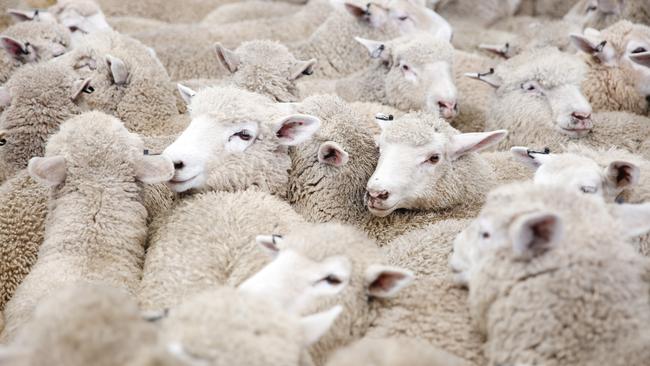Less supply but higher quality sucker lambs
The latest MLA sheep projection figures forecast tight lamb supply heading into winter but the higher quality of lambs this season is missing.

FEWER lambs this year is a given, particularly during winter.
And it’s a key component of the latest industry outlook put out by Meat and Livestock Australia this week.
What the document doesn’t go into, however, is the impact of the best mild and wet autumn break the country has seen for decades, and how it could change the onset and shape of the sucker lamb season.
Winter officially began only this week, but there is already talk about how well early drop lambs have performed and the possibility of very good young lambs being available from August onwards.
Ray White Emms Mooney livestock agent Ben Emms said he had been out on the road across NSW and Victoria in recent weeks buying store cattle and had noticed advanced sucker lambs in a few areas.
“I think we could have one of the best early sucker lamb seasons we’ve seen for a very long time,’’ Mr Emms said.
Feedback from producers is also upbeat.
Benalla producer Laurie Horne told The Weekly Times it was the best season he could recall in 40 years of farming on his property, evident in his lambing percentages and how well they were faring.
“I’ve never seen twins like it,’’ Mr Horne said. “From a mob of 301 crossbred ewes we marked 399 lambs and they are all looking good.’’
What the industry appears to be heading into is a young lamb season where the bulk of suckers could be turned off in prime condition, marking a big change on recent years where drought has produced more light stores than fat trades.
The timing of the sucker lamb is still open to debate.
While one theory supports early sales due to the good season, the other theory is farmers with excess feed could choose to hang on to lambs because of the rapid weight gain of suckers on good pasture.
A lot of decision-making will be made around price.
One Riverina agent said if station properties could get $170 to $180 for big runs of young lambs they would be inclined to take it and run, as it would be like “Christmas on a stick’’.
Price-wise, the market is difficult to judge due to the disruptions caused by COVID-19 and mixed messages from the export market.
In autumn the possibility of a big winter price spike was muted by some lacklustre results in April and May, particularly for heavy lambs being sold at saleyards.
In the past fortnight there was a rally for nicely weighted trade lambs weighing from around 20kg to 26kg cwt, with these averages for these now tracking between 850c/kg and 900c/kg, according to NLRS reports.
But as we enter a period traditionally associated with processor slowdowns, it is optimistic to work on the market being able to march to new highs.
Earlier week at the Bendigo market, NSW exporter Fletchers didn’t operate on heavy lambs after being the frontrunner for this stock throughout May. So far this year, according to NLRS data, the highest monthly price average for heavy lambs (listed as 22kg plus so taking in the supermarket style lambs as well has bigger exports) was 935c/kg cwt in March.
When discussing price trends with buyers recently, one exporter made the somewhat intriguing comment that there is only one price peak for lambs in a year.
What this referred to was it was rare for prices to hit a peak (such as 935c/kg in March), drop back, and then go to a higher peak a couple of months later. And the observation appears to hold some form, at least with data from the past five years.
Last year prices for heavy lambs flatlined between January and March at 640c/kg to 658c/kg before steadily climbing each month after to peak at 967c/kg cwt in July. Prices were then crunched in August, falling back to an average of 845c/kg and steadily declining each month after.
In 2018 the peak of the market was in August, before being crunched in September.
With August now just nine weeks away, producers need to keep tabs on how supplies of young lambs are shaping up and what weights could be available, as when suckers start to run, the supply pressure on processors is likely to ease significantly.
MORE


